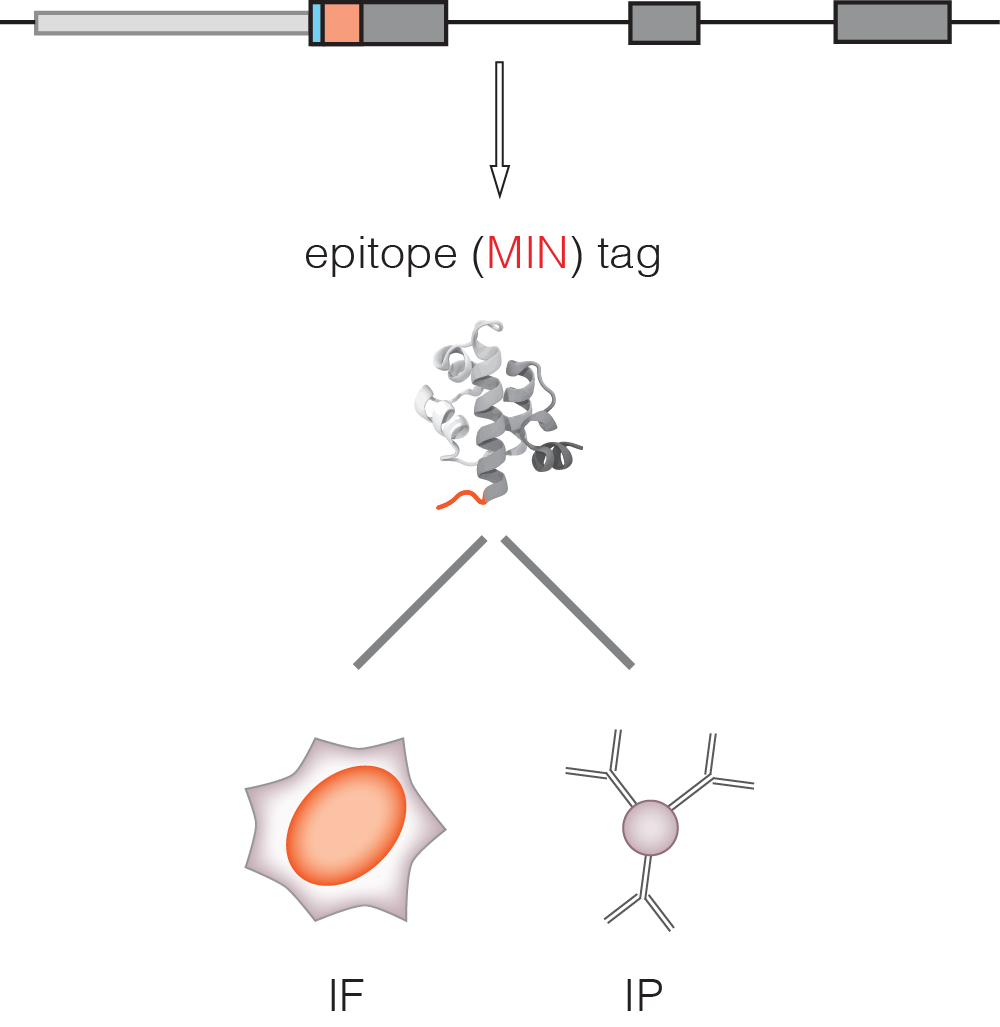anti-MIN antibody information
INTRODUCTION
Once a MIN-tagged cell line is established, in-frame fusion of the MIN-tag to
the target gene also results in the expression of a novel epitope tag. This
epitope tag can be detected by a highly specific anti-MIN antibody, which can
be used to screen for positive clones, perform co-immunoprecipitation
experiments, as well as conventional and super resolution microscopy.
Detailed instructions and protocols can be found HERE |

|
Using the MIN-antibody for Immunoprecipitation (IP)
Couple the MIN-antibody to beads
The monoclonal rat-anti-MIN antibody is provided as hybridoma culture supernatant. For coupling of the antibody to protein G beads (magnetic or sepharose), use a 10:1 ratio of antibody to bead volume, e.g. 500 μ antibody + 50 μ beads.
Immunoprecipitation
In principle, any standard cell lysis procedure should be compatible with anti-MIN-IP. Usually, 25 μl beads are sufficient to precipitate MIN-tagged protein from ~ 10 million ES cells.
Using the MIN-tag antibody in Immunofluorescence (IF)
Immunostaining Samples with MIN-tag antibody
The monoclonal rat-anti-MIN antibody is provided as hybridoma culture supernatant. For coupling of the antibody to protein G beads (magnetic or sepharose), use a 10:1 ratio of antibody to bead volume, e.g. 500 μ antibody + 50 μ beads.